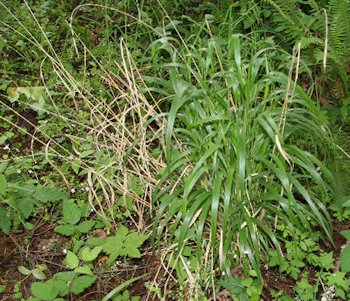
|
Wildflowers Found in Oregon
False Brome Brachypodium sylvaticum - False Brome is a perennial bunchgrass native to North Africa and Eurasia, and has recently been reported as rapidly invading coniferous forest understories in western Oregon. Occasionally cultivated for ornamental purposes, it was first collected as an escaped invader in North America near Eugene, Oregon in 1939. By 1966, it was well-established in two large colonies near Corvallis, Oregon and since then has been quickly increasing in cover and range. It is now spreading into closed-canopy coniferous forests, riparian forests, forest edges, and upland prairies in full sun in Oregon's Willamette Valley and into the Cascade foothills. It has the potential to spread throughout low elevation forests in the Pacific Northwest (Oregon, Washington, Idaho, British Columbia), and could spread into northern California too. It is a caespitose (tufted) perennial grass that typically grows 5 to 7 m tall. It tends to form large clumps or bunches, but is apparently not rhizomatous. The hollow culms (stems) are pilose (i.e. bearing soft, spreading hairs) at the nodes and sometimes over the lower internodes. Its broad flat leaves are 4 to 10 mm wide, pilose, open-sheathed at the base, and do not have auricles. On to Problems with this Plant On to Next Flower ⇨ |
| Hi-Res Pic (316K) Hi-Res Pic Seeds (96K) Return to Thumb Page 10 Return to Wildflower Alpha List - Page 2 | |